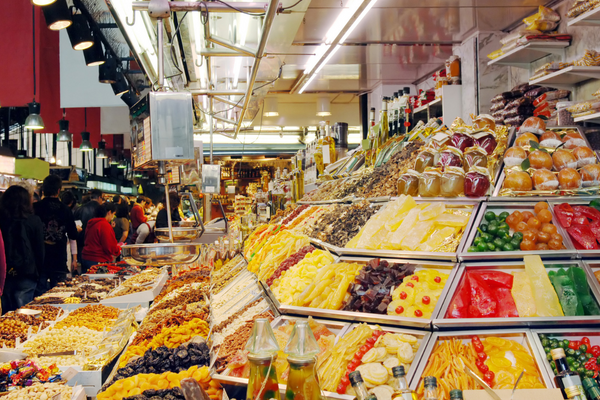Catalan Cuisine – A Guide
Barcelona – is a city renowned for its cultural diversity and multiple influences- is this more noticeable than its cuisine in no area. Heavily influenced by the surrounding Catalan region and its diverse geographical landscape, the area is a melting pot of fresh vegetables and choice fish, poultry, and game.
Catalans also have a growing reputation throughout Spain and the world. The region is fast becoming renowned for producing the best chefs and most refined gastronomy in the country (a title traditionally held by the Basques and one that they’re not going to relinquish without a fight). Men such as Ferran Aria helped put Barcelona on the culinary map. He is widely regarded as the world’s most innovative chef, and his restaurant, El Bulli, two hours north of Barcelona, is regarded as one of the world’s best– the 27-course “degustation” menu has achieved cult status amongst foodies throughout
the world.
Barcelona has a wide selection of restaurants and eateries to suit all wallets and tastes, and this article will give you a rundown on some of the region’s traditional fayre, such as “Mar Y Mantegna,” a take on “Surf and Turf,” which combines seafood with some poultry or game in the same meal. The proximity of the Mediterranean coastline provides the region with a large amount of seafood, and the classic fried fish dishes enjoyed in Andalusia are available throughout the province. With over 500km of coastline in the region, you can expect fresh fish and shellfish of excellent quality throughout Catalonia. You can be sure that influences from all over the Mediterranean can be found in the region.
Much of Catalan cuisine lies in the preparation of sauces for meat and fish dishes; a firm favorite is “Romesco,”; usually made with tomatoes, almond, olive oil, and garlic, and the classic oil and garlic-based “Allioli” is also a well-trusted formula in the city’s restaurants and kitchens.
Simplicity is also embraced in Catalan cuisine, and no dish more so than the beautiful “Pa amb tomaquet,” a dish of fresh bread rubbed with tomato, garlic, and olive oil often brought out before a meal in restaurants and much lauded as a tasty
substitute to bread and butter.
The core of Catalan cuisine still comes from the trio of ingredients introduced into the region by the Romans. The trinity of bread, wine, and oil have been used ever since in daily life. In Medieval times Arab influences also left their mark on Catalonia, and classic Moorish combinations of sweet and sour can still be seen today in favorite dishes such as rabbit with
pears and duck with fruit.
Another regional specialty is “Bacalao” (what we’d call salt-cod in English) – it’s easily recognized in markets and stalls by its pungent smell and harks back to the pre-refrigeration days when preserving and curing meats and fish were essential to survival. Today it is used in stews and salads, can be prepared in several ways, and is a highly versatile ingredient. Particularly excellent is “Esqueixada,” a superb salad dish with shredded “Bacalao” found in bars around the city.
With such a plethora of flavors on offer and the chance to eat in some of Spain’s finest restaurants, visitors to the region are rarely disappointed in the cuisine, which even prompted American restaurant critic and writer Coleman Andrews to describe it as “Europe’s last great culinary secret.” The secret may be out now, but that shouldn’t hinder your enjoyment of some excellent food.
